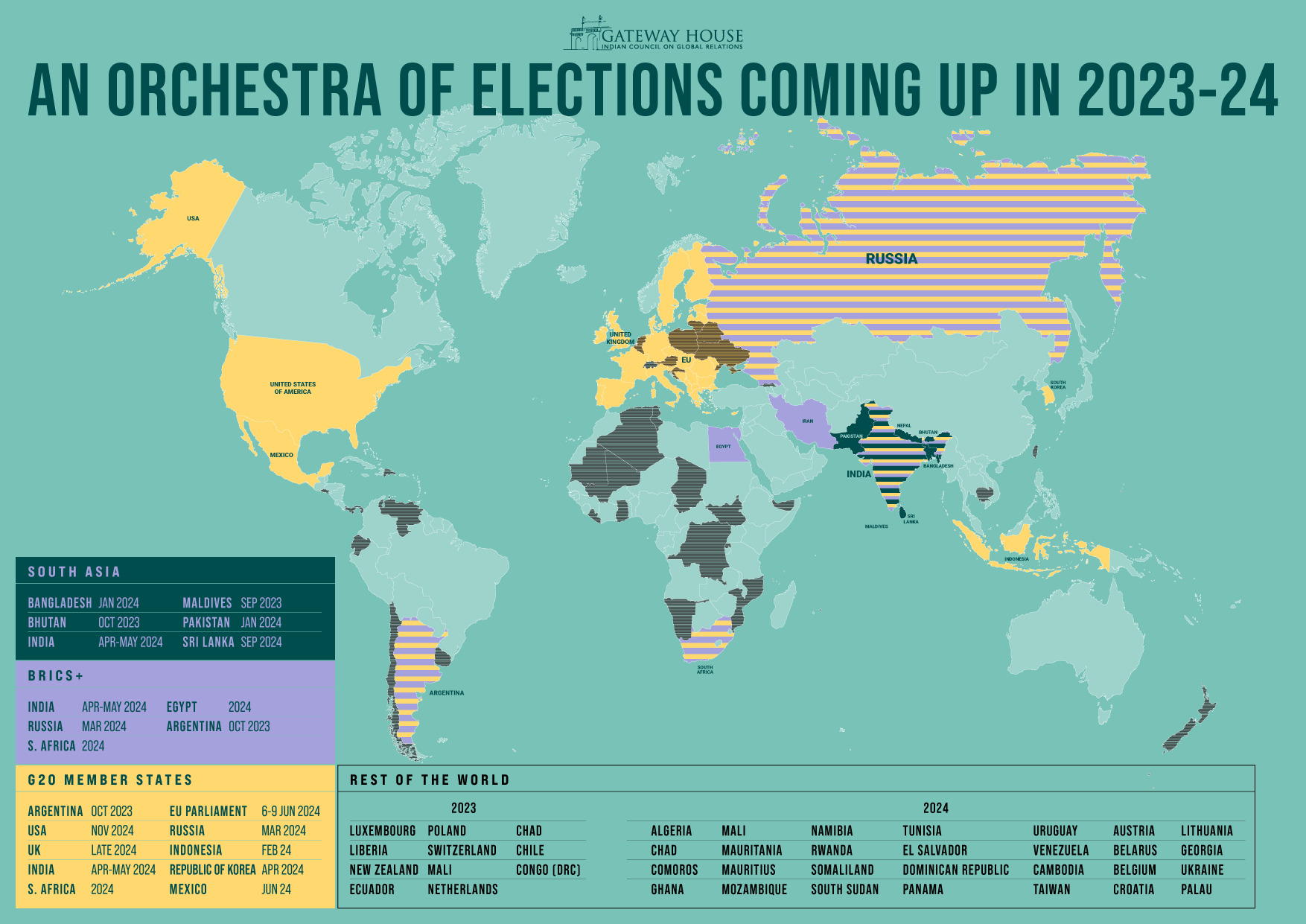Between September 2023 and November 2024, a sweep of 56 democracies across the world are scheduled to hold general elections. The electoral campaigns are being fought over a combination of new and old issues, both domestic and international. The backdrop of these polls is a receding postwar, West-led order, the on-going aftermath of the Covid-19 pandemic, food and energy crises exacerbated by the Russia-Ukraine conflict.
The map shows key elections scheduled for 2023 and 2024. For India, these come in clearly defined global configurations: nearly half of the G20 member states will vote between October 2023 and 2024, along with five of the expanded-11-member BRICS. Closer to home, most of the South Asian region is part of this cycle.
The just-concluded Maldivian election, which held its second run-off round on September 30, was the beginning of the South Asian cycle. Can this be seen as an indicator for other South Asian elections, where Chinese investment and influence is in now in direct competition with India? The election in the Maldives included, among domestic issues, campaigns by “India First” and “India Out” candidates. The winner was Mohammed Muizzu, the “India Out” contender, who however, says he will steer his country towards a more independent foreign policy.
What is new is that India is now not just an issue in South Asian elections. Of course, there will be a focus on India in campaigns in Bangladesh, Sri Lanka and Pakistan. But India’s rising global profile and attractiveness as a global investment destination, is making it a serious talking point in Western elections too.
In New Zealand for instance, both the Prime Minister Chris Hipkins and opposition leader Chistopher Luxon, promise greater engagement with India. Luxon has even promised to lead a ministerial delegation to India in the first 12 months of his term, if elected. Indian-origin citizens are 5% of the population, with deep ties to India, and a large number of Indian students are heading to Wellington for their education.
In the U.K., Prime Minister Rishi Sunak’s electoral star will shine better if he concludes a trade deal with India. The expanding bilateral with Washington, will certainly be a positive in the elections, given how fraught the U.S.’ non-G7 relationships have become. Accompanying India, the baton-carrier for the Global South, will infuse some optimism into a cynical election campaign.
Three major blocs will have new leaders: six in South Asia, ten of the G20, five of the BRICS-plus. India has an interest in all three: its own national election and that impact on its neighbourhood and vice versa; in the G20, of which India is still part of the troika and has to see through its ambitious commitments; in BRICS-plus, where a new global game is afoot.
Charuta Ghadyalpatil is a Research Assistant, Gateway House.
Infographic designed by Debarpan Das.
This infographic was exclusively designed for Gateway House: Indian Council on Global Relations. You can read more exclusive content here
For permission to republish, please contact outreach@gatewayhouse.in
©Copyright 2023 Gateway House: Indian Council on Global Relations. All rights reserved. Any unauthorised copying or reproduction is strictly prohibited.



